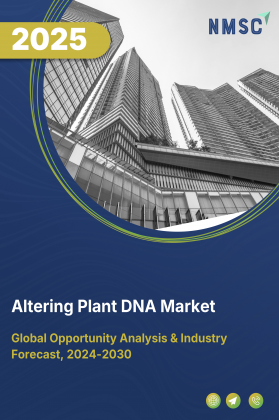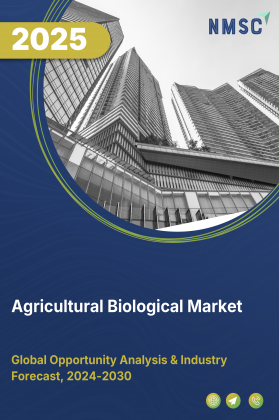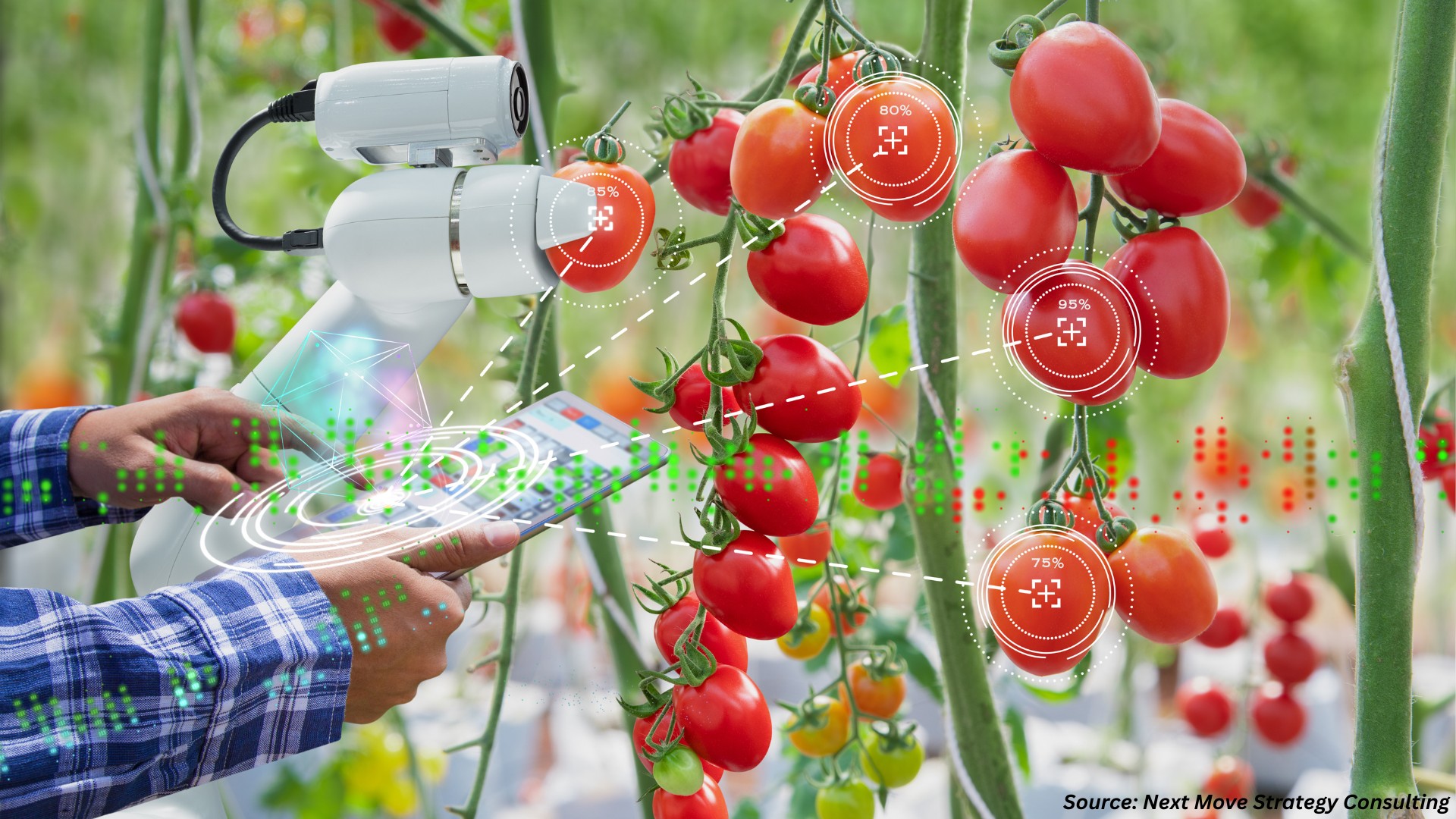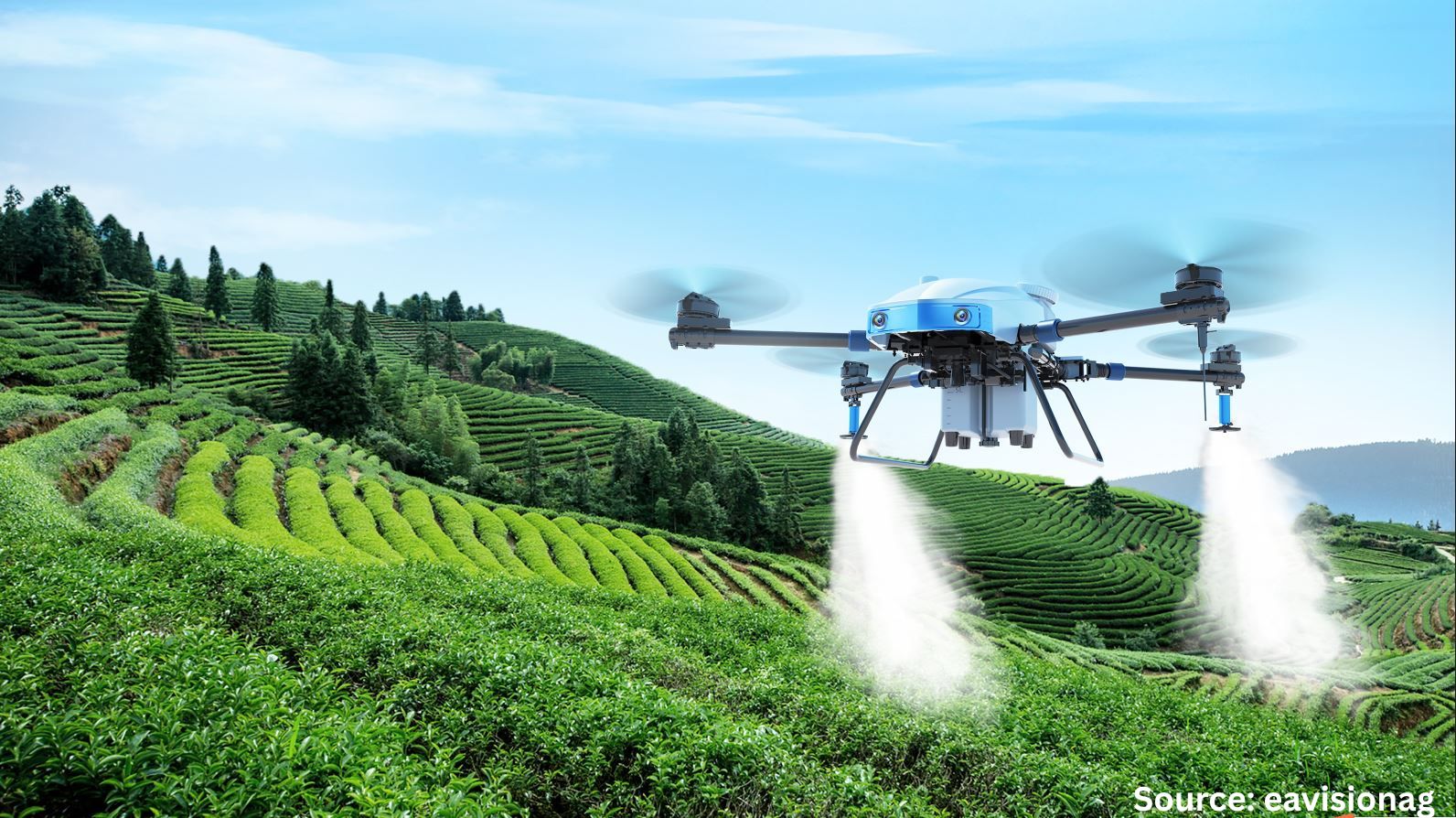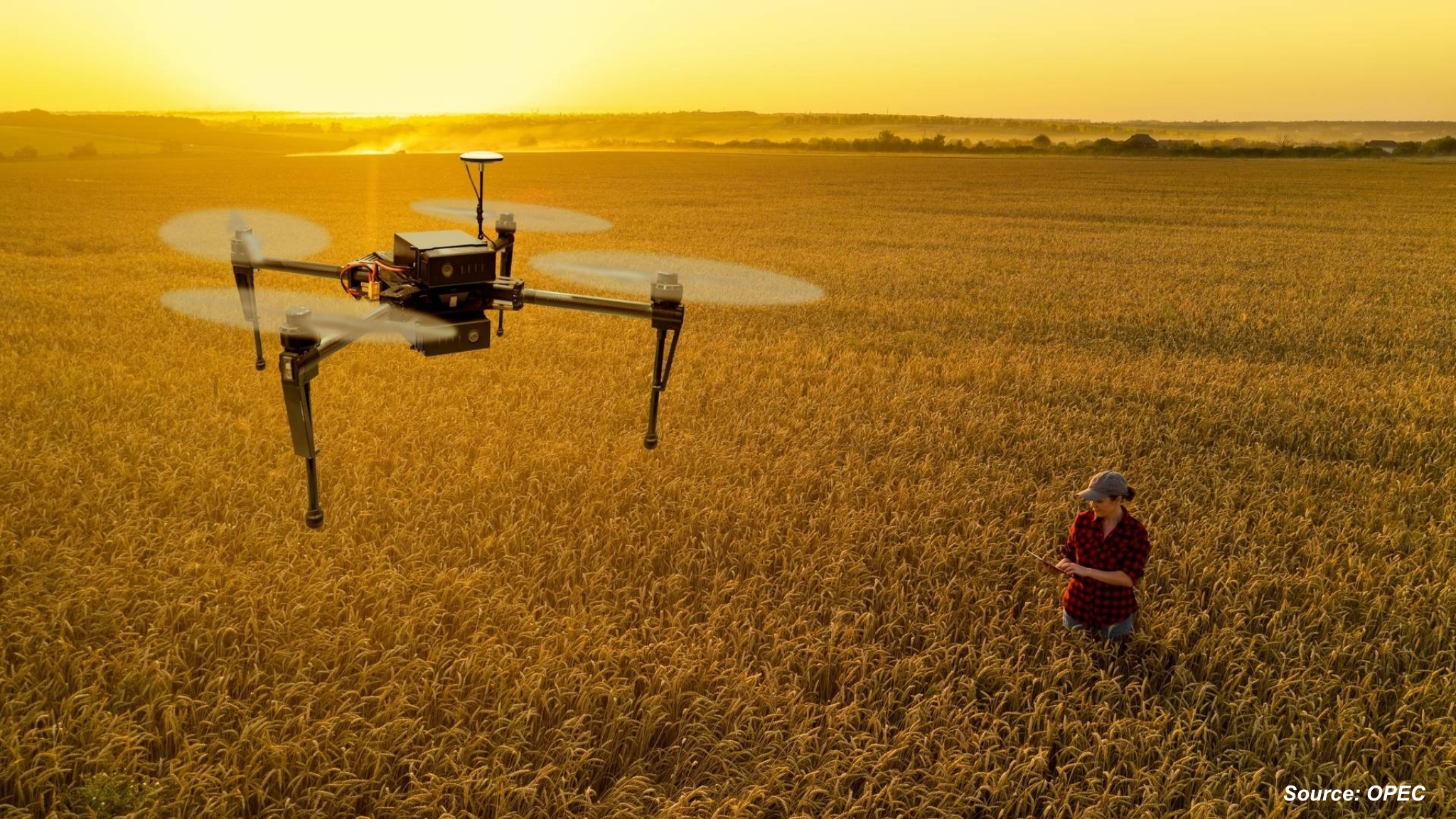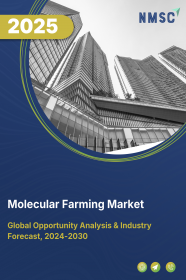
Molecular Farming Market by Type (Plant Based and Animal Based), by Technology (Gene Gun, Agroinfiltration, Electroporation, Agrobacterium-Mediated Gene Transfer), by Application (Recombinant Antibodies, Hormones, Vaccines, Industrial Enzymes, Proteins & Protein-Based Materials, Technical Reagents, Nutritional Product, and Others), and by End-Users (Biotechnology & Pharmaceutical Companies, Contract Manufacturing Organizations, Others) –Global Opportunity Analysis and Industry Forecast 2025–2030
Molecular Farming Industry Overview
The global Molecular Farming Market size was valued at USD 501.5 million in 2024, and is expected to be valued at USD 578.4 million by the end of 2025. The industry is projected to grow further, hitting USD 1180.2 million by 2030, with a CAGR of 15.3% between 2025 and 2030.
The market, also known as the biopharming market, is experiencing significant growth, driven by the rising geriatric population, increasing prevalence of infectious diseases, and growing crop production. However, stringent regulatory compliance requirements pose barriers to seamless expansion. Despite these challenges, advancements in CRISPR-Cas9 gene editing technology present substantial opportunities for innovative market trends, particularly in biopharmaceutical and agricultural sectors. Leading players such as NewMoo Foods Ltd., PoLoPo Ltd., and Miruku Ltd. are leveraging strategic product launches and investments to strengthen their market presence, fostering innovation and sustainability.
Rising Geriatric Population Drives Market Growth
The expanding global aging population is accelerating the molecular farming market growth. As per the United Nations’ World Population Prospects 2022, the share of individuals aged 65 and older is projected to increase from 10% in 2022 to 16% by 2050. This demographic shift drives demand for biopharmaceuticals, such as monoclonal antibodies, vaccines, and therapeutic proteins, to address age-related conditions like arthritis and neurodegenerative disorders. Molecular farming, utilizing genetically engineered plants, offers a cost-effective and scalable platform for producing these treatments, enhancing accessibility and supporting market trends toward advanced healthcare solutions.
Increasing Prevalence of Infectious Diseases Fuels Market Demand
The rising incidence of infectious diseases, including cancer, hepatitis, and Ebola, is propelling market growth by increasing the need for affordable biopharmaceuticals. According to the World Health Organization, global cancer cases reached 20 million in 2022, with projections estimating 35 million by 2050, a 77% rise. Genetically modified crops addresses this demand by enabling rapid, high-volume production of vaccines, therapeutic proteins, and antibodies through plant-based systems. This efficiency drives market demand, making biopharming a critical component of global health solutions and advancing market trends toward scalable medical innovation.
Growing Crop Production Propels Market Expansion
Surging global crop production is supporting the molecular farming market trends by providing abundant plant biomass for biopharmaceutical production. The Food and Agriculture Organization reported in December 2023 that global primary crop production reached 9.6 billion tons in 2022, up 56% since 2000. This increase in biomass from plants like tobacco, maize, and rice reduces production costs for recombinant proteins and enzymes, enhancing scalability. Investments in agricultural infrastructure, such as China’s Smart Agriculture Action Plan launched in October 2024, further bolster biomass availability, aligning with market trends toward sustainable biopharming solutions.
Stringent Regulatory Compliance Hinders Market Growth
The high regulatory barriers imposed by agencies like the U.S. Food and Drug Administration (FDA), the European Medicines Agency (EMA), and Singapore’s Health Sciences Authority (HSA) remain a significant challenge to market growth. Extensive safety, efficacy, and environmental impact testing for genetically modified organisms (GMOs) used in biopharming delays commercialization and increases costs. These stringent requirements particularly affect smaller companies, limiting their ability to scale and restraining broader market demand for molecular farming solutions.
Advancements in CRISPR-Cas9 Gene Editing Create Growth Opportunities
The integration of CRISPR-Cas9 gene editing technology offers significant opportunities for the market growth. This technology enables precise modifications in plants, improving the efficiency and yield of biopharmaceutical production. For example, in September 2024, Pairwise secured USD 40 million and partnered with Corteva, Inc. to advance CRISPR-based crop enhancements for biopharming applications. As CRISPR technology evolves, it streamlines production processes, attracts investments, and drives sustainable market trends, positioning plant-based biopharmaceuticals as a transformative industry solution.
Market Segmentations and Scope of the Study
The molecular farming market report is segmented on the basis of type, technology, application, end-users, and by region. On the basis of type, the market is segmented into plant based and animal based. Based on plant based, the market is further grouped into maize, barley, tobacco, safflower, rice, and alfalfa. Based on animal based, the market is further divided into goats, chickens, cows, and rabbits. On the basis of technology, the market is segmented into gene gun, agroinfiltration, electroporation, and agrobacterium-mediated gene transfer. On the basis of application, the market is grouped into recombinant antibodies, hormones, vaccines, industrial enzymes, proteins and protein-based materials, technical reagents, nutritional product, and others. On the basis of end-users, the market is divided into biotechnology and pharmaceutical companies, contract manufacturing organizations, and others. Regional breakdown and analysis of each of the aforesaid segments includes regions comprising of North America, Europe, Asia-Pacific, and RoW.
Geographical Analysis
The North American region leads the molecular farming market share, driven by a rapidly aging population and growing demand for biopharmaceuticals. The aging demographic, especially in Mexico, which is projected to increase by 108% by 2050, significantly boosts the demand for advanced treatments such as vaccines and therapeutic proteins. Additionally, the rising prevalence of diseases like cancer, with U.S. cancer cases estimated to grow by 43.6% by 2040, fuels the need for large-scale, cost-effective biopharmaceutical production. Biopharming offers a sustainable solution by using genetically engineered plants to produce crucial drugs, meeting both the demand for healthcare and cost-effective drug production.
In the Asia-Pacific region, molecular farming is experiencing steady growth due to supportive government initiatives and funding aimed at enhancing the bioeconomy. India’s BioE3 Policy, approved in August 2024, focuses on improving biomanufacturing capabilities, boosting research and scaling up production of bio-based products. Similarly, China’s Smart Agriculture Action Plan, launched in October 2024, seeks to increase agricultural productivity through sustainable practices and digitalization. These efforts drive the development of advanced farming solutions by improving biomass availability and making biopharming platforms more sustainable, enabling efficient production of biopharmaceuticals.
Europe’s industry is growing due to the region’s strong regulatory framework and focus on sustainability. The EU Green Deal, which emphasizes reducing emissions and promoting circular economies, encourages plant-based production platforms that align with environmental goals. Moreover, significant investments in biotechnology research, such as Germany’s Biotech Strategy 2024, are accelerating the adoption of advanced farming technologies.
These policies and investments support the development of high-performance biomanufacturing solutions, fostering innovation and creating opportunities for market growth in Europe.
In the Rest of the World, particularly in Latin America and Africa, the industry is driven by increasing healthcare demands and government efforts to promote biotechnology. In Brazil, the growing healthcare sector, coupled with rising disease incidence, is driving the need for affordable, large-scale biopharmaceutical production. In South Africa, government investment in biotechnology, particularly in the development of diagnostic tools, supports the adoption of biopharming for healthcare solutions. These efforts create growth opportunities in the market, although challenges like infrastructure and access to technology still remain in certain regions.
Strategic Initiatives and Innovations Driving Growth in the Global Molecular Farming Market
The global molecular farming industry is thriving, driven by key companies advancing sustainable biopharmaceutical and food production. Leading players, including Bright Biotech Ltd., Moolec Science SA, Miruku Ltd., Finally Foods Ltd., Elo Life Systems, Inc., Tiamat Sciences Corporation, Core Biogenesis SAS, IngredientWerks, Inc., Kyomei Ltd., ORF Genetics, BioBetter Ltd., Forte Protein, Inc., Bright Green Partners B.V., NewMoo Foods Ltd., and PoLoPo Ltd., are adopting strategies such as product launches and raising investments to strengthen their market dominance.
These efforts foster innovation and address challenges like regulatory complexities, driving market growth. NewMoo Foods Ltd. focuses on producing casein for dairy cheese using molecular farming. In May 2024, the company raised USD 7.0 million in seed funding to enhance its leadership team, advance R&D for seed development, and optimize its liquid casein production process, enabling dairy cheese manufacturers to expand their market reach. In March 2024, PoLoPo launched its SuperAA platform, enabling protein production in common crops and reinforcing its commitment to biopharming innovation.
Miruku Ltd. produces dairy proteins and fats using oilseed crops. In February 2024, the company secured USD 5.0 million in pre-series A funding to expand its molecular farming platform and conduct field trials in Australia, broadening its market presence.
Key Benefits
-
The report provides quantitative analysis and estimations of the industry from 2025 to 2030, which assists in identifying the prevailing market opportunities.
-
The study comprises a deep-dive analysis of industry including the current and future trends to depict prevalent investment pockets in the market.
-
Information related to key drivers, restraints, and opportunities and their impact on the industry is provided in the report.
-
Competitive analysis of the players, along with their market share is provided in the report.
-
SWOT analysis and Porters Five Forces model is elaborated in the study.
-
Value chain analysis in the market study provides a clear picture of roles of stakeholders.
Molecular Farming Market Key Segments
By Type
-
Plant Based
-
Maize
-
Barley
-
Tobacco
-
Safflower
-
Rice
-
Alfalfa
-
-
Animal Based
-
Goats
-
Chickens
-
Cows
-
Rabbits
-
By Technology
-
Gene Gun
-
Agroinfiltration
-
Electroporation
-
Agrobacterium-Mediated Gene Transfer
By Application
-
Recombinant Antibodies
-
Hormones
-
Vaccines
-
Industrial Enzymes
-
Proteins & Protein-Based Materials
-
Technical Reagents
-
Nutritional Product
-
Others
By End-Users
-
Biotechnology & Pharmaceutical Companies
-
Contract Manufacturing Organizations
-
Others
By Region
-
North America
-
The U.S.
-
Canada
-
Mexico
-
-
Europe
-
The U.K.
-
Germany
-
France
-
Italy
-
Spain
-
Denmark
-
Netherlands
-
Finland
-
Sweden
-
Norway
-
Russia
-
Rest of Europe
-
-
Asia-Pacific
-
China
-
Japan
-
India
-
South Korea
-
Australia
-
Indonesia
-
Singapore
-
Taiwan
-
Thailand
-
Rest of Asia-Pacific
-
-
RoW
-
Latin America
-
Middle East
-
Africa
-
Key Players
-
Bright Biotech Ltd.
-
Moolec Science SA
-
Miruku Ltd.
-
Finally Foods Ltd.
-
Elo Life Systems, Inc.
-
Tiamat Sciences Corporation
-
Solar Foods
-
IngredientWerks, Inc.
-
Kyomei Ltd.
-
ORF Genetics
-
Biobetter Ltd.
-
Forte Protein, Inc.
-
Bright Green Partners B.V.
-
NewMoo Foods Ltd.
-
Polopo Ltd.
REPORT SCOPE AND SEGMENTATION:
|
Parameters |
Details |
|
Market Size in 2024 |
USD 501.5 million |
|
Revenue Forecast in 2030 |
USD 1180.2 million |
|
Growth Rate |
CAGR of 15.3% from 2025 to 2030 |
|
Analysis Period |
2024–2030 |
|
Base Year Considered |
2024 |
|
Forecast Period |
2025–2030 |
|
Market Size Estimation |
Million (USD) |
|
Growth Factors |
|
|
Countries Covered |
28 |
|
Companies Profiled |
15 |
|
Market Share |
Available for 10 companies |
|
Customization Scope |
Free customization (equivalent to up to 80 working hours of analysts) after purchase. Addition or alteration to country, regional, and segment scope. |
|
Pricing and Purchase Options |
Avail customized purchase options to meet your exact research needs. |

















 Speak to Our Analyst
Speak to Our Analyst



